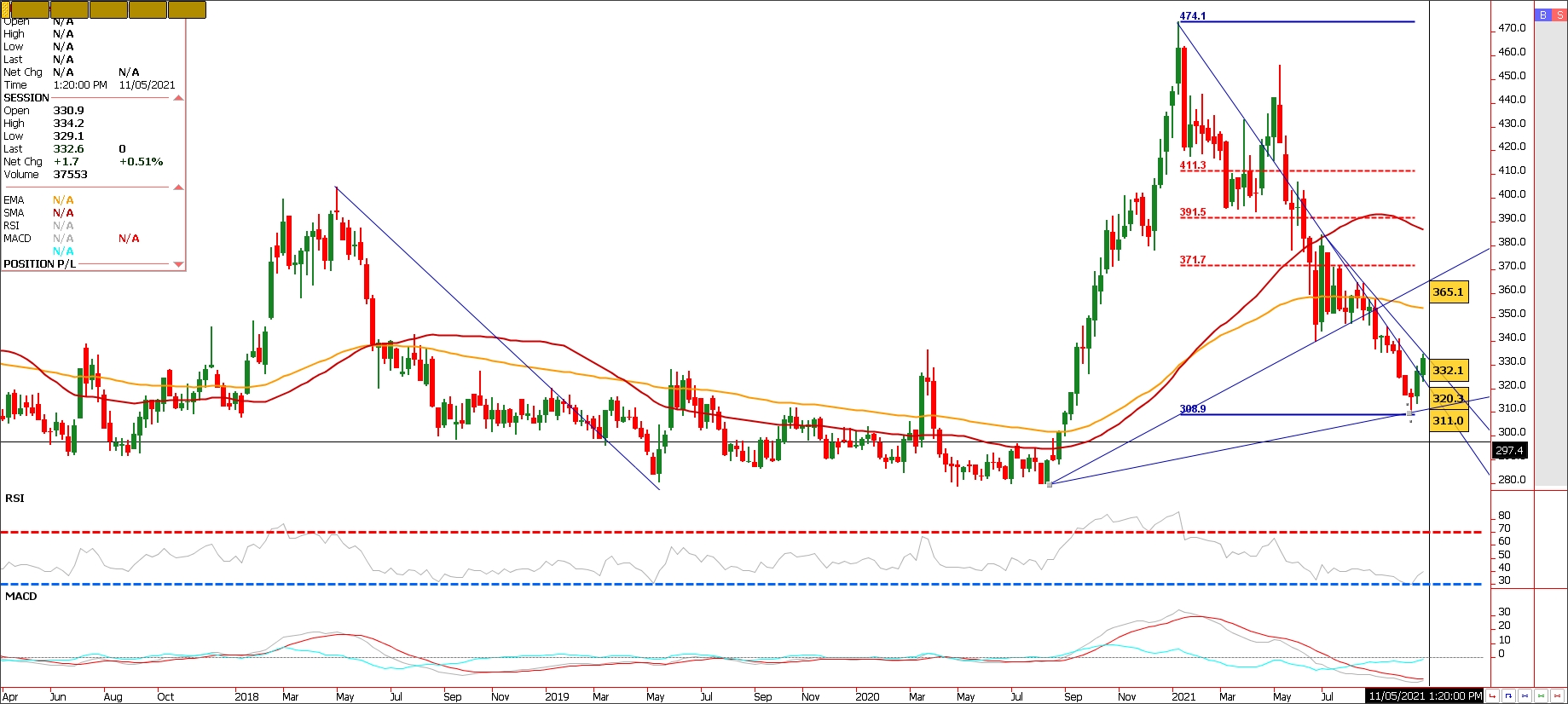Commentary
The latest CFTC report saw short covering featured in Soy meal. The net managed money short came in at 15,141 contracts per Tuesday October 26th. In the last reporting period per CFTC, the short positions covered 12,128 contracts, while the longs added 4,890 contracts. December is still the most actively traded contract on the Board, but the volume will roll to January and March in the weeks ahead. Fundamentals for beans given the balance sheet tell the market we have more beans than thought possible in carryout, i.e. ending stocks. Does that matter in regards to low soy meal prices? High energy prices, high wheat prices, firm corn due to rising input costs may raise all boats in an inflation play that may not ebb for some time. I included a chart below. Should the recent low below 3.10 in soy meal be a seasonal low, I posit that higher prices could be coming amid an inflationary bubble being built in the commodity sector. Technically, we could be in for a bounce amid a threatening La Nina emerging in South America. Last year, in my opinion, South America experienced the same type of weather set up, meaning more question marks and unknowns regarding Argentinean production due to hot/dry conditions from La Nina.. Argentina is the largest bean crusher in the World and weather problems there in my view would urge funds to cover shorts and potentially build a long in the market. That said, If I am betting long this market, it’s a long term bet out to next July. La Nina’s according to Professional weather watchers are never the same in size, scope, and duration and are very unpredictable. Late rains last year that showed up late in South American growing areas aided final yields and production. It’s the uncertainty at the onset of planting and growing season in my opinion that creates a bid in the market.
Trade Ideas
Futures-N/A
Options-Sell the July Meal 450/400 put spread at 47.00.
Risk/Reward
Futures-N/A
Options-the maximum loss on the spread is at 5K plus commissions and fees. However, one is collecting $4700.00 upon entry minus commissions and fees. The risk here is $300.00 plus fees. The goal is to buy it back cheaper than what we sold it for. If one sells at 47.00, I would suggest to buy back at 25.00 points. The difference between the sell and buy is $22.00, or $2200.00 minus all trader costs and fees.
Please join me for a free grain and livestock webinar at 3 pm Central. We discuss supply, demand, weather,a and the charts. Sign Up Now

Walsh Trading, Inc. is registered as a Guaranteed Introducing Broker with the Commodity Futures Trading Commission and an NFA Member.
Futures and options trading involves substantial risk and is not suitable for all investors. Therefore, individuals should carefully consider their financial condition in deciding whether to trade. Option traders should be aware that the exercise of a long option will result in a futures position. The valuation of futures and options may fluctuate, and as a result, clients may lose more than their original investment. The information contained on this site is the opinion of the writer or was obtained from sources cited within the commentary. The impact on market prices due to seasonal or market cycles and current news events may already be reflected in market prices. PAST PERFORMANCE IS NOT NECESSARILY INDICATIVE OF FUTURE RESULTS.
All information, communications, publications, and reports, including this specific material, used and distributed by Walsh Trading, Inc. (“WTI”) shall not be construed as a solicitation for entering into a derivatives transaction. WTI does not distribute research reports, employ research analysts, or maintain a research department as defined in CFTC Regulation 1.71.
